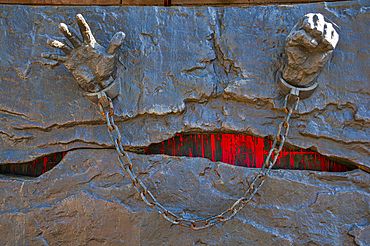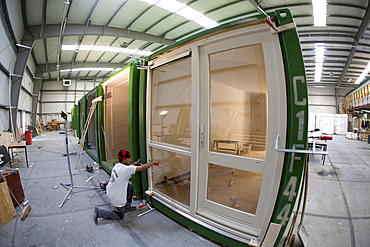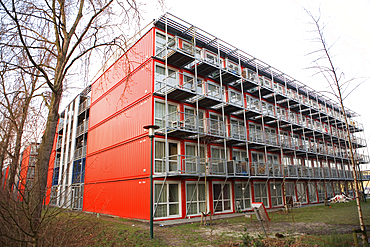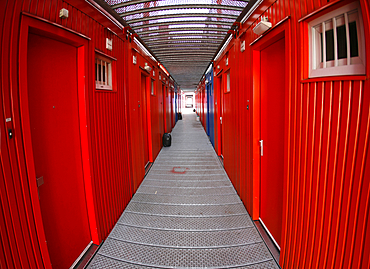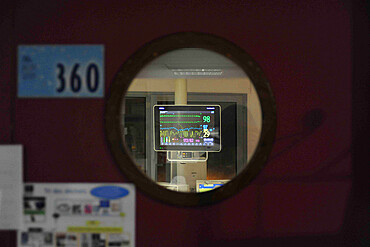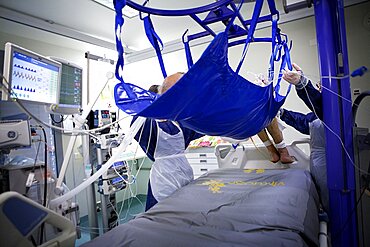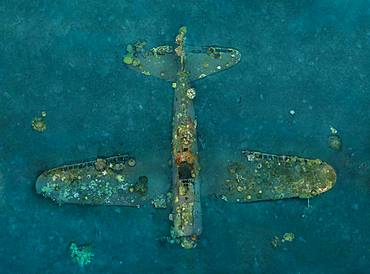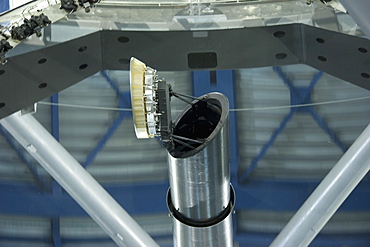Recent searches
Loading...
1384-593 - Police Life Saving Unit building, Pasikudah Bay, Eastern Province, Sri Lanka, Asia
1184-11501 - Unit 731, Japanese Germ warfare experimental Base, Harbin, Heilongjiang, China
1184-11499 - Unit 731, Japanese Germ warfare experimental Base, Harbin, Heilongjiang, China
1184-11500 - Unit 731, Japanese Germ warfare experimental Base, Harbin, Heilongjiang, China
1184-11498 - Unit 731, Japanese Germ warfare experimental Base, Harbin, Heilongjiang, China
1184-11497 - Unit 731, Japanese Germ warfare experimental Base, Harbin, Heilongjiang, China
1184-11496 - Unit 731, Japanese Germ warfare experimental Base, Harbin, Heilongjiang, China
1184-11495 - Unit 731, Japanese Germ warfare experimental Base, Harbin, Heilongjiang, China
860-290685 - A white rhinoceros, Ceratotherium simum, in Masai Mara Rhino sanctuary escorted by an anti poaching unit. Masai Mara National Reserve, Kenya, Africa.
1350-6061 - Iraqi, Afghani and Syrian refugees in Kara Tepe refugee camp in Lesbos, Greece
1350-6090 - temporary houses (sea containers) in Holland
1350-6093 - temporary houses (sea containers) in Holland
1350-6094 - temporary houses (sea containers) in Holland
1350-6088 - temporary houses (sea containers) in Holland
1350-6297 - Painted Hills Unit, John Day Fossil Beds National Monument, Oregon.
1350-6092 - temporary houses (sea containers) in Holland
1350-6086 - temporary houses (sea containers) in Holland
1350-6087 - temporary houses (sea containers) in Holland
1174-11005 - Two patient beds in a maternity unit, a bright yellow bag.
1350-4016 - A pulling unit or workover rig providing maintenance on an oil well in the canyon country of Utah.
1350-4147 - A conventional horsehead oil well pump jack unit and storage tank battery on an oil well site in Utah.
1348-5337 - Medical intensive care unit at Jacques Cartier Hospital in Massy
1348-5342 - Medical intensive care unit at Jacques Cartier Hospital in Massy
1348-5327 - Medical intensive care unit at Jacques Cartier Hospital in Massy
1348-5338 - Medical intensive care unit at Jacques Cartier Hospital in Massy
1348-5334 - Medical intensive care unit at Jacques Cartier Hospital in Massy
1348-5341 - Medical intensive care unit at Jacques Cartier Hospital in Massy
1348-5336 - Medical intensive care unit at Jacques Cartier Hospital in Massy
1348-5329 - Medical intensive care unit at Jacques Cartier Hospital in Massy
1348-5331 - Medical intensive care unit at Jacques Cartier Hospital in Massy
1348-5335 - Medical intensive care unit at Jacques Cartier Hospital in Massy
1348-5332 - Medical intensive care unit at Jacques Cartier Hospital in Massy
1348-5339 - Medical intensive care unit at Jacques Cartier Hospital in Massy
1348-5333 - Medical intensive care unit at Jacques Cartier Hospital in Massy
1348-5330 - Medical intensive care unit at Jacques Cartier Hospital in Massy
1348-5328 - Medical intensive care unit at Jacques Cartier Hospital in Massy
1348-5340 - Medical intensive care unit at Jacques Cartier Hospital in Massy
1348-3925 - Reportage in a post-natal clinic in Champigny, France. Since leaving the neonatal unit, the twins (3-months old) are checked every week to follow their growth. Consultation with the post-natal clinic doctor.
1348-3457 - Reportage in a post-natal clinic in Champigny, France. Since leaving the neonatal unit, the twins (3-months old) are checked every week to follow their growth. Consultation with the post-natal clinic doctor.
1348-3461 - Reportage in a post-natal clinic in Champigny, France. Since leaving the neonatal unit, the twins (3-months old) are checked every week to follow their growth. Consultation with the post-natal clinic doctor.
1348-3455 - Reportage in a post-natal clinic in Champigny, France. Since leaving the neonatal unit, the twins (3-months old) are checked every week to follow their growth.
1348-3470 - Reportage in a post-natal clinic in Champigny, France. Since leaving the neonatal unit, the twins (3-months old) are checked every week to follow their growth. Consultation with the post-natal clinic doctor.
1348-2413 - Reportage on the Jeunes Pousses, a follow-up care and pneumo-pediatric rehabilitation unit specializing in climate therapy for asthma, Briançon, France
1348-2409 - Reportage on the Jeunes Pousses, a follow-up care and pneumo-pediatric rehabilitation unit specializing in climate therapy for asthma, Briançon, France
1348-2410 - Reportage on the Jeunes Pousses, a follow-up care and pneumo-pediatric rehabilitation unit specializing in climate therapy for asthma, Briançon, France
1218-1484 - Bison in the Theodore Roosevelt National Park South Unit, North Dakota, United States of America, North America
1218-1483 - Beautiful view of the Theodore Roosevelt National Park South Unit, North Dakota, United States of America, North America
1218-1482 - Woman enjoying the view along the Theodore Roosevelt National Park North Unit, North Dakota, United States of America, North America
1218-1481 - Bison grazing along the Theodore Roosevelt National Park North Unit, North Dakota, United States of America, North America
1113-105402 - Laughing tibetan monks, Qinghai, China, Asia
1113-105361 - Gold seekers at a river, Nha Trang, Vietnam, Asia
1113-105371 - Old men sitting in front of a building, Troodos mountains, Pano Platres, Cyprus, Europe
1113-104182 - Couple falling in love, sitting on jetty
1113-104179 - Couple sitting on jetty, man with arms around woman
1113-103506 - Young man and two children sitting on bench before sea shore, low section, Apulia, Italy
1113-103507 - Two children sitting on bench before sea shore, boy hugging little girl, Apulia, Italy
1116-48836 - Colourful layers of minerals are exposed at John Day Fossil Beds National Monument. No grass grows on the Painted Hills Unit, Mitchell, Oregon, United States of America
1116-48830 - Clouds float above the Painted Hills Unit of John Day Fossil Beds National Monument, Mitchell, Oregon, United States of America
1116-48835 - Goat Rock Unit, John Day Fossil Beds National Monument, Dayville, Oregon, United States of America
1116-48200 - Newborn baby in mother's arms in the Neonatal Intensive Care Unit, Surrey, British Columbia, Canada
1116-48199 - Newborn baby in mother's arms in the Neonatal Intensive Care Unit, Surrey, British Columbia, Canada
1116-45203 - Abundance Of Red Books On A Shelving Unit, Yorkshire Dales, England
860-287442 - Tara Pacific expedition - november 2017 Kimbe Bay, papua New Guinea, Zero wreck: Coral growth on this wreck is from a period of 74 years ! D: 15 m The ZERO, is a Japanese WW2 fighter plane wreck. This Zero wreck was discovered in January 2000 by local William Nuli while he was freediving for sea cucumbers. He asked the Walindi Plantation Resort dive team if they might know what it was, and when they investigated they uncovered the intact wreck of a Zero fighter, resting on a sedimented bottom in 15 m depth. This World War II Japanese fighter is almost completely intact. The plane is believed to have been ditched, the pilot is believed to have survived, but was never found on the island. He never returned home. Maybe he disappeared in the jungle? On 26th December 1943, during the battle of Cape Gloucester, the Japanese pilot made an emergency landing, ditching his Mitsubishi A6M Zero plane into the sea approximately 100m off West New Britain Province. The plane was piloted by PO1 Tomiharu Honda of the 204st K?k?tai. His fate is unknown but it is believed the he made a controlled water landing after running out of fuel and survived. Although he failed to return to his unit, the plane was found with the throttle and trim controls both set for landing and the canopy was open. There are no visible bullet holes or other shrapnel damage and the plane is still virtually intact after over 70 years underwater. It is a A6M2 Model 21 Zero, made famous for its use in Kamikaze attacks by the Japanese Imperial Navy. The wreck has the Manufacture Number 8224 and was built by Nakajima in late August 1942.
860-287440 - Tara Pacific expedition - november 2017 Zero wreck, vertical view Orthomosaic from 3D photogrammetry (13500 x 10000 px). D: 15 m Kimbe Bay, papua New Guinea, Coral growth on this wreck is from a period of 74 years ! The ZERO, is a Japanese WW2 fighter plane wreck. This Zero wreck was discovered in January 2000 by local William Nuli while he was freediving for sea cucumbers. He asked the Walindi Plantation Resort dive team if they might know what it was, and when they investigated they uncovered the intact wreck of a Zero fighter, resting on a sedimented bottom in 15 m depth. This World War II Japanese fighter is almost completely intact. The plane is believed to have been ditched, the pilot is believed to have survived, but was never found on the island. He never returned home. Maybe he disappeared in the jungle? On 26th December 1943, during the battle of Cape Gloucester, the Japanese pilot made an emergency landing, ditching his Mitsubishi A6M Zero plane into the sea approximately 100m off West New Britain Province. The plane was piloted by PO1 Tomiharu Honda of the 204st K?k?tai. His fate is unknown but it is believed the he made a controlled water landing after running out of fuel and survived. Although he failed to return to his unit, the plane was found with the throttle and trim controls both set for landing and the canopy was open. There are no visible bullet holes or other shrapnel damage and the plane is still virtually intact after over 70 years underwater. It is a A6M2 Model 21 Zero, made famous for its use in Kamikaze attacks by the Japanese Imperial Navy. The wreck has the Manufacture Number 8224 and was built by Nakajima in late August 1942.
1116-40713 - Mother Pulling Daughter Up Snowy Hill On Sled
1116-40789 - Mother And Daughters Walking Together, Maui, Hawaii, Usa
746-74710 - Gancia underground wine cathedral in Canelli, wine press double unit and thanks for traditional spumante production, Asti, Piedmont, Italy, Europe
1174-4351 - A ladder beside an industrial unit, with corrugated iron walls, USA
1116-39181 - Sun Unit Telescope 1 & Moon Unit Telescope 2, Belonging To The Very Large Telescope (Vlt) Operated By The European Southern Observatory On Cerro Paranal At Sunset, Antofagasta Region, Chile
1116-39186 - Sun Unit Telescope 1, Moon Unit Telescope 2, Southern Cross Unit Telescope 3, Venus Unit Telescope 4 Belonging To The Very Large Telescope (Vlt) Operated By The European Southern Observatory At Cerro Paranal, Antofagasta
1116-39189 - Unit Telescopes And Auxiliary Telescopes Belonging To The Very Large Telescope (Vlt) On The Platform Operated By The European Southern Observatory At Paranal, Antofagasta Region, Chile
1116-39183 - Sun Unit Telescope 1 & Moon Unit Telescope 2, Belonging To The Very Large Telescope (Vlt) Operated By The European Southern Observatory On Cerro Paranal At Sunset, Antofagasta Region, Chile
1116-39191 - Unit Telescopes And Auxiliary Telescopes Belonging To The Very Large Telescope (Vlt) On The Platform Operated By The European Southern Observatory At Paranal, Antofagasta Region, Chile
1116-39180 - Sun Unit Telescope 1 & Moon Unit Telescope 2, Belonging To The Very Large Telescope (Vlt) Operated By The European Southern Observatory On Cerro Paranal At Sunset, Antofagasta Region, Chile
1116-39184 - Mechanical Structure Of Moon Unit Telescope 2, Belonging To The Very Large Telescope (Vlt) Operated By The European Southern Observatory On Cerro Paranal, Antofagasta Region, Chile
1116-39193 - Control Center & Antu (Sun) Unit Telescope 1, Belonging To The Very Large Telescope (Vlt) Operated By The European Southern Observatory At Paranal, Antofagasta Region, Chile
1116-39190 - Unit Telescopes And Auxiliary Telescopes Belonging To The Very Large Telescope (Vlt) On The Platform Operated By The European Southern Observatory At Paranal, Antofagasta Region, Chile
1116-39182 - Southern Cross Unit Telescope 3, Belonging To The Very Large Telescope (Vlt) Operated By The European Southern Observatory On Cerro Paranal At Sunset, Antofagasta Region, Chile
1116-39179 - Auxiliary Telescope, Sun Unit Telescope 1, Moon Unit Telescope 2 & Southern Cross Unit Telescope 3, Belonging To The Very Large Telescope (Vlt) Operated By The European Southern Observatory At Paranal, Antofagasta Region, Chile
819-673 - The Atomium, constructed for the Expo in 1958, in the shape of a unit cell of an iron crystal magnified 165 billion times, Bruxelles, Belgium, Europe
797-12851 - Poland, Auschwitz-Birkenau State Museum, Auschwicz Concentration Camp, Display unit with some of the victims suitcases.
1178-18866 - Close up of outdoor air conditioning unit


